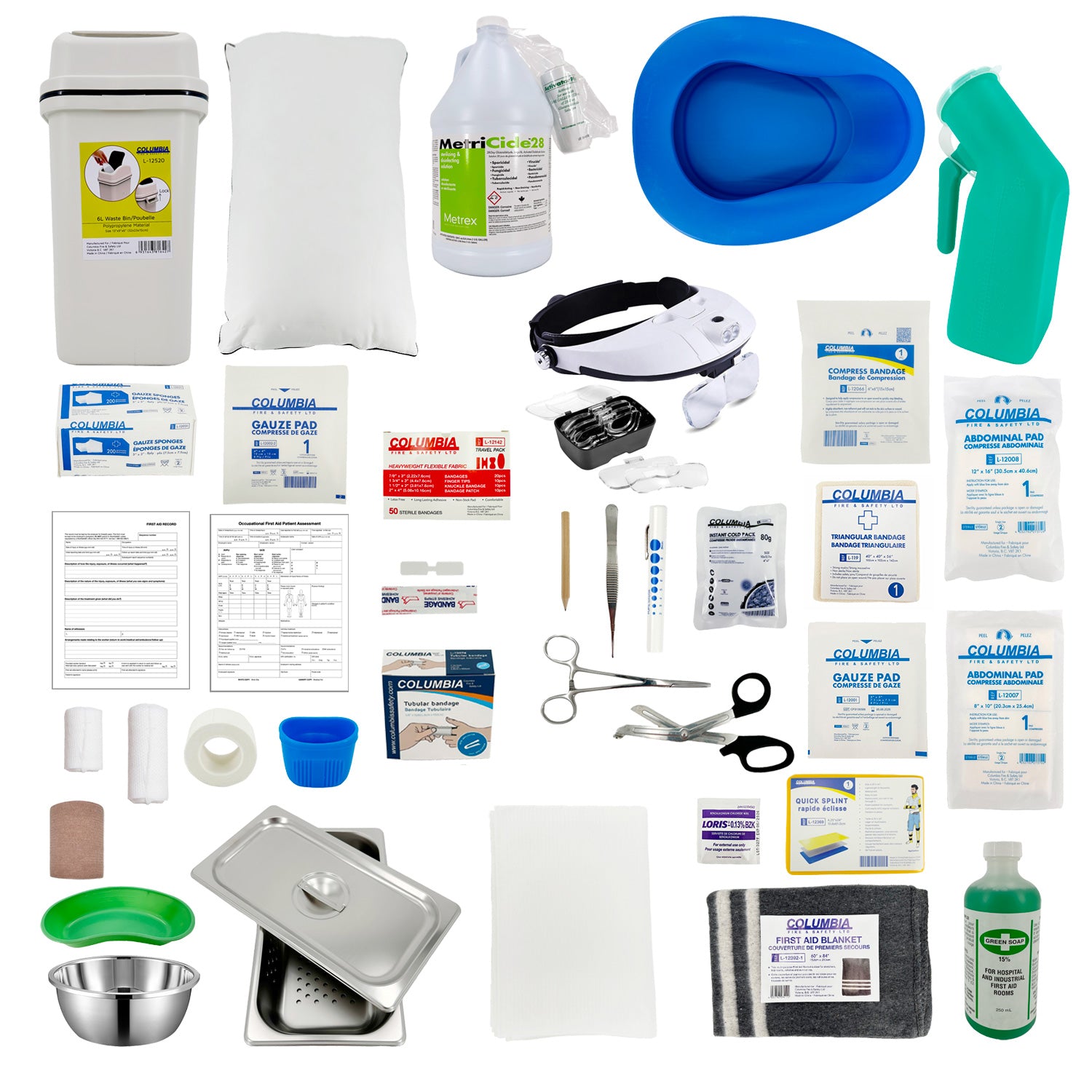Description
First aid rooms
A first aid room should be at least 9.3 square meters (100 sq. ft.). It should have storage cupboards, counter
space, and a toilet (or have a toilet facility as near as practicable). The following equipment should be included
Click here to download contents PDF
WorkSafeBC First Aid Requirements (BC)
As of November 1, 2024, WorkSafeBC updated the Occupational Health & Safety (OHS) Regulation for occupational first aid. Employers must ensure their workplace has the correct first aid services, attendants, equipment, supplies, facilities, and emergency transportation as determined by a written first aid assessment.
What Changed
- Amendments align BC first aid with CSA standards and clarify kit contents, facilities, and transport.
- Requirements depend on a written first aid assessment for each workplace.
See: WorkSafeBC announcement.
How to Determine Your Requirements
- Do a written first aid assessment for each location/shift.
- Consider: number of workers, hazard rating, remoteness/response time, and any unique risks.
- Use the results to identify the minimum services, attendants, equipment, supplies, facilities, and transport per Schedule 3-A.
Tools & forms: First Aid Assessment Worksheet (PDF/Online) | First Aid Requirements overview.
First Aid Kits (Types & Contents)
WorkSafeBC identifies four kit types with minimum recommended contents:
- Personal kit
- Basic kit
- Intermediate kit
- Advanced kit
Download the official equipment/supplies information sheet for the full contents list: First aid equipment, supplies, and facilities (Info Sheet, Oct 2024).
Attendants & Training
- Attendant level (basic/intermediate/advanced) and numbers are determined by the assessment and Schedule 3-A.
- Attendants must hold WorkSafeBC-approved certification and be present on required shifts.
See: OHS Regulation Part 3 (Schedule 3-A).
Facilities & Equipment
- Dressing stations or First aid rooms may be required depending on worker count, risk, and remoteness.
- First aid kits must be clean, accessible, and regularly inspected/restocked.
Details: Supplies, equipment & facilities.
Emergency Transportation (ETV) & Remote Worksites
- Where required by the assessment/Schedule 3-A, provide an Emergency Transport Vehicle (ETV) or equivalent means.
- ETV must protect patients from the elements, allow safe care during movement, have internal/external communications, and meet design guidelines (e.g., ~1 m headroom).
See guidance: OHS Guidelines Part 3 (G3.16).
Recordkeeping & Procedures
- Maintain written first aid procedures and conduct regular drills.
- Record all injuries/treatments and retain records as required by regulation.

